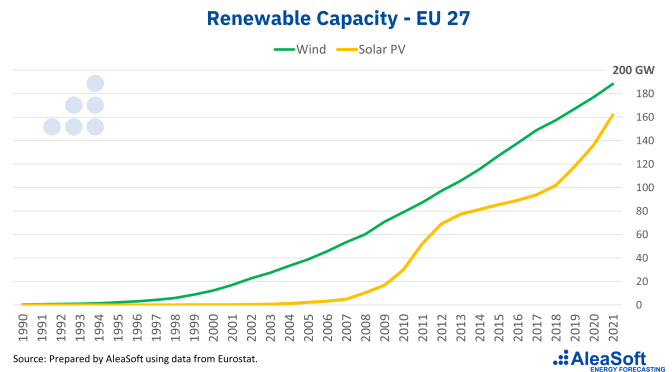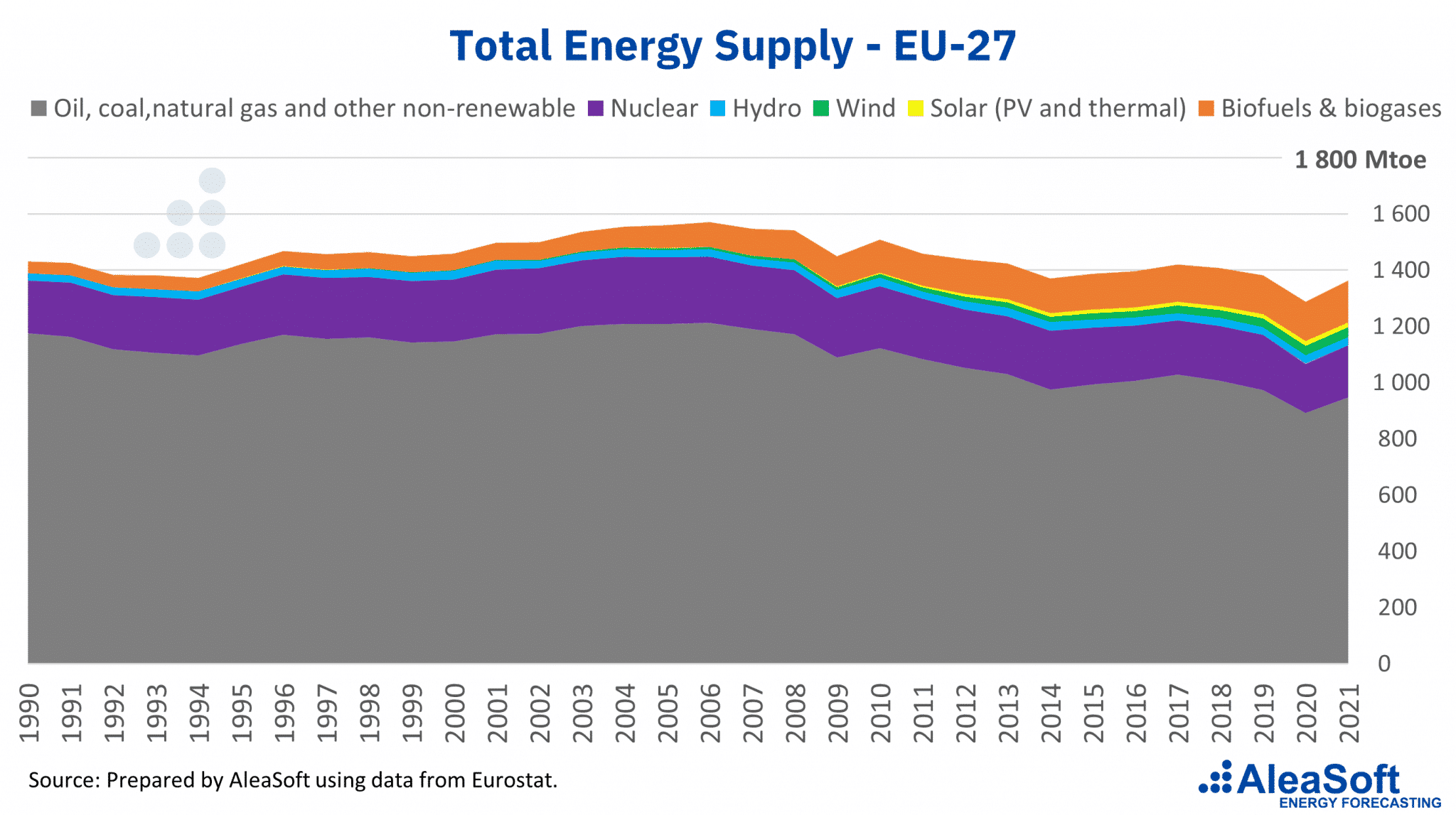If one had to list just fifteen factors that will be key to achieving decarbonisation, they would be: wind energy, solar photovoltaic energy, renewable energy demand, green hydrogen, transmission and distribution grids, batteries, pumping, concentrated solar power energy, international interconnections, smart grids, appropriate regulation, biofuels, biomass, CO2 capture and storage, and self-consumption. Each of these and their role in the energy transition will be discussed in a series of three news items.
The energy transition in Europe, which will enable decarbonisation towards a zero net greenhouse gas emission and energy independent economy, is a transformation of gigantic proportions, which, moreover, is intended to be carried out in just a few decades. The effects of climate change and the consequences of external energy dependence in a highly tense geopolitical situation have led the European Union to step on the accelerator of the energy transition.
Such a far-reaching and rapid transformation requires many interacting factors in the European energy system to advance and transform simultaneously. In other words, the vision for the future of the European energy sector in 2050 is quite clear, but there will be misalignments on the way to that goal. But if the transition proceeds as expected, these disruptions will be temporary.
Wind energy and solar photovoltaic energy
Renewable energies are the arrowhead, the most visible face of the energy transition. Complete decarbonisation requires replacing all current use of fossil fuels, which is the main energy source on which the European and global economy is currently based. Renewable energies will eventually provide 100% of the energy that will be consumed.
Wind energy and solar photovoltaic energy stand out among renewable technologies. Both have been present in the electricity systems of many countries for a long time, but they are the fastest growing and the ones that European countries’ energy and climate plans have identified as the main ones to displace gas and coal in the energy mix.
Wind energy is already a very mature technology that has been increasing its installed capacity in Europe for decades. Solar photovoltaic energy, on the other hand, although it has also been part of the European electricity generation mix for a long time, has experienced a strong acceleration in recent years thanks to the falling costs of photovoltaic panels and the flexibility that allows them to be installed in large ground-mounted plants as well as on residential and industrial roofs and rooftops.
It is precisely solar photovoltaic energy that is currently growing the fastest and which is causing negative prices in several European electricity markets and also energy curtailments because not all of its production can be integrated into the grid at times of maximum solar irradiation in the central hours of the day. These are an example of the mismatches discussed above and occur because renewable production capacity is increasing much faster than other factors such as energy storage and increased electricity demand, which in the long term will compensate and largely avoid both negative prices and curtailments.
Renewable energy demand
Currently, 70% of total final energy consumption in the European Union comes from fossil fuels. In three decades, fossil fuel consumption must fall to zero and all energy must come from renewable sources. Consequently, the demand for non-emitting energies will increase threefold.
As for electricity demand, it currently accounts for about a quarter of final energy consumption. Given that a large part of decarbonisation will come from electrification, this demand is set to increase fourfold in the coming decades.
This increased demand for renewable energies is the necessary counterbalance that will absorb all renewable production, while renewable production needs this increased demand to be profitable and to minimise energy waste.
Green hydrogen
Where electrification is not possible, decarbonisation will require green, renewable fuels that do not cause emissions either during production or combustion. In high-temperature industrial processes or in heavy, long-distance transport, electrification is either not efficient or simply not possible. This is where green fuels will play a key role in the energy transition.
The vector that is currently the most suitable for this role is green hydrogen. Green hydrogen is produced by electrolysis of water using electricity from renewable sources. During combustion, hydrogen emits no greenhouse gases, making it the ideal gas to become the fuel of the future.
The European Union’s goals are for green hydrogen to be a mature and fully deployed technology on the continent by 2050. By 2030, the aim is to have 40 GW of electrolysers and a production of 10 million tonnes per year. To this end, the maximum end date for long-term natural gas contracts has been set at 2049.
The construction of electrolysers and the development of the necessary infrastructure for their distribution will be another key to a complete energy transition. The Iberian Peninsula, with its great solar energy potential, and the North Sea, with its offshore wind energy potential, can become the main hubs for the production and distribution of green hydrogen for the European continent.
Electricity transmission and distribution grids
Electricity grids are the path of energy from its point of generation to each point of consumption. A complete energy transition will require electricity transmission and distribution grids capable of transporting all renewable generation to consumption points with minimum congestion to avoid energy curtailments.
Another challenge for the electricity system will be that generation will become less centralised and more decentralised. This is an advantage as electricity needs less power lines as generation is much closer to consumption. But it is also a challenge, as the balance between generation and consumption that must always be maintained will become more complex.
AleaSoft Energy Forecasting’s analysis on the prospects for energy markets in Europe and the financing of renewable energy projects
The next webinar that will be held on June 8 at 10:00 CET will be the edition number 34 of the series of monthly webinars of AleaSoft Energy Forecasting y AleaGreen, and will have again the participation of speakers from Engie. From Engie they will contribute with their extensive experience to the analysis of the financing of renewable energy projects and PPA, and the webinar will analyse the main regulatory issues of the Spanish electricity sector as well as the evolution of the European energy markets in the second half of 2023 and during next winter.





